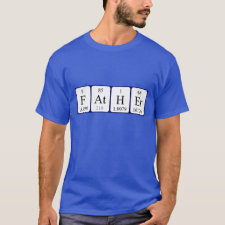
Authors: Meng MJ, Bao LL, He MQ, Sun KY, Li WB, Zhao DX, Feng YH, Yan YS
Article Title: Preparation, characterization, and adsorption performance of p-hydroxybenzoic acid imprinted polymer and selective catalysis of toluene to para-chlorotoluene.
Publication date: 2014
Journal: Journal of Applied Polymer Science
Volume: 131
Issue: (8)
Page numbers: Article No 40118.
DOI: 10.1002/app.40118
Abstract: A p-hydroxybenzoic acid surface molecularly imprinted polymer (p-HB-SMIP) with silica microspheres as a supporting matrix was prepared by the adoption of the surface molecular imprinting technique with acrylamide (AM) as a functional monomer, ethylene glycol dimethacrylate as a crosslinker, and azoisobutyronitrile as an initiator. The p-HB-SMIP was characterized by scanning electron microscopy, Fourier transform infrared spectroscopy, and thermogravimetry. Interactions between the functional monomer and template were observed with UV-visible spectroscopy of the solutions of these components as well. The results indicate that a 1:2 molecular complex was formed between p-hydroxybenzoic acid (p-HB) and AM. A kinetic binding study showed that p-HB-SMIP reached saturation adsorption after about 1 h, and the pseudo-second-order model fitted the adsorption kinetics data. Static adsorption experiments revealed that the Freundlich equation fitted the adsorption isotherm data. The thermodynamics parameters (with positive values of enthalpy and entropy and negative values of Gibbs free energy) indicated that the binding system for p-HB-SMIP was endothermic and entropy was gained and was spontaneous. Selective experiments showed that p-HB-SMIP had a high affinity and excellent recognition selectivity for the template p-HB. p-HB-SMIP was further investigated by the catalysis of toluene to para-chlorotoluene. The catalytic reaction results showed that the conversion of toluene was 85.5% and the molar ratio of para-chlorotoluene to o-chorotoluene was 1.38; this was higher than that of traditional catalysts. -® 2013 Wiley Periodicals, Inc. J. Appl. Polym. Sci. 2014, 131, 40118
Template and target information: p-hydroxybenzoic acid, 4-hydroxybenzoic acid, p-HB
Author keywords: molecularly imprinted polymer, p-hydroxybenzoic acid, selectivity, para-chlorotoluene, catalysis



Join the Society for Molecular Imprinting

New items RSS feed
Sign-up for e-mail updates:
Choose between receiving an occasional newsletter or more frequent e-mail alerts.
Click here to go to the sign-up page.
Is your name elemental or peptidic? Enter your name and find out by clicking either of the buttons below!
Other products you may like:
 MIPdatabase
MIPdatabase









